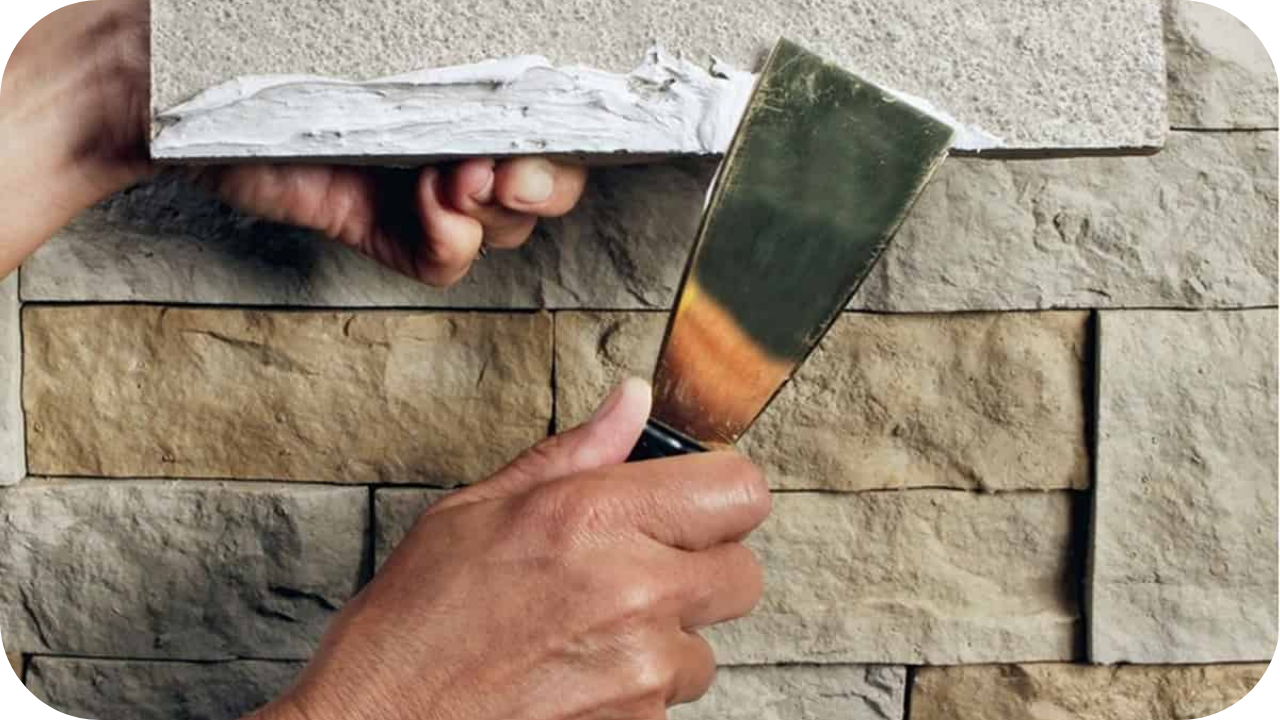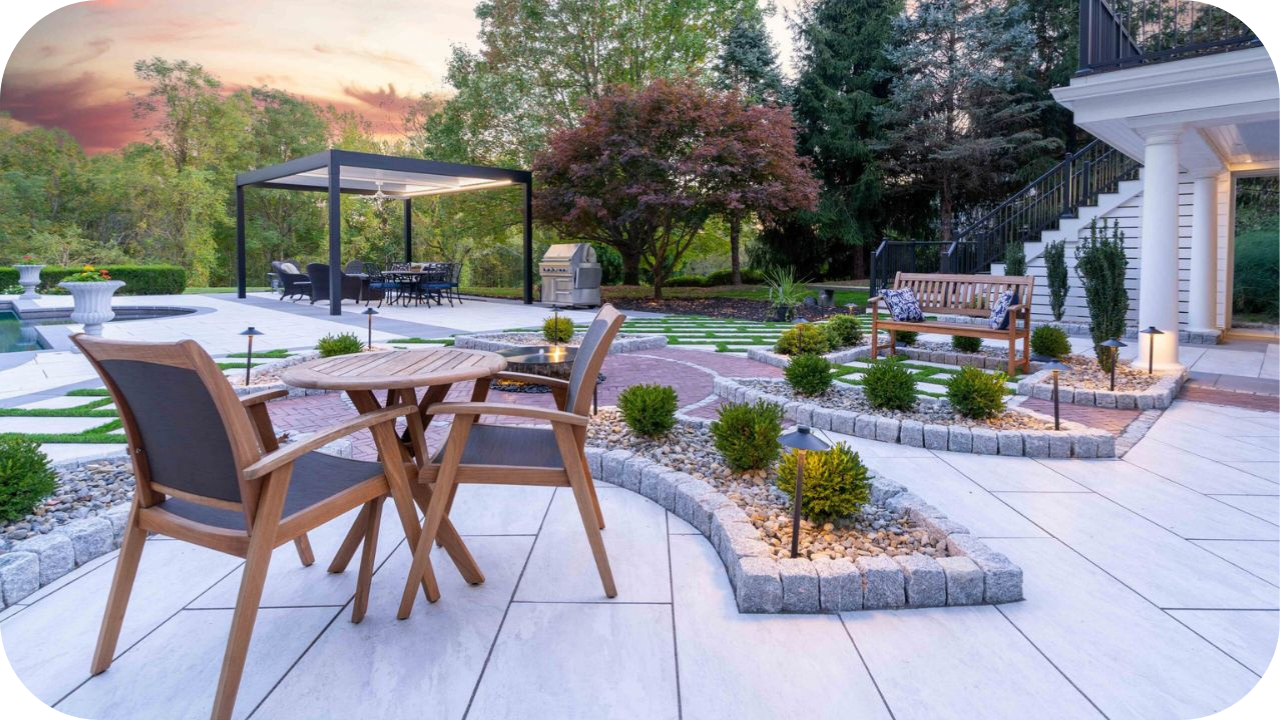
Choosing the wrong adhesive for stone cladding can lead to cracking, detachment, or even structural failure. All that hard work could fall apart in months if the bonding isn’t right.
Temperature shifts, surface types, and moisture exposure all impact how well your cladding holds up. The right adhesive keeps your project solid, secure, and visually flawless over time.
In this guide, we’ll walk you through how to pick the best adhesive for your stone cladding so you can install it once and get it right.
Why the Right Adhesive Matters
Selecting the correct adhesive for stone cladding is more than a technical detail; it is the foundation of a successful and long-lasting installation. The adhesive ensures that each stone remains firmly attached under the pressures of gravity, moisture, and temperature fluctuations.
If the bond is weak, stones may loosen, crack, or even fall, resulting in expensive repairs and safety risks. The type of stone, weight, location, and exposure to elements all influence adhesive choice.
For example, cement-based adhesives suit porous and heavy stones, while epoxy adhesives are better for high-moisture environments. Polyurethane adhesives are ideal where flexibility is required.
Taking time to match the adhesive to your specific cladding conditions prevents failure and protects your investment for years to come.
Key Factors to Consider When Choosing an Adhesive
Selecting the right adhesive isn’t just technical; it’s the backbone of your stone cladding’s durability, visual appeal, and long-term performance. Here’s what to weigh up.
1. Stone Type
Different stones have varying densities and moisture absorption rates. Dense stones like granite need strong adhesives, while porous types like limestone require moisture-resistant options to prevent weakening, discolouration, or bond failure over time.
2. Installation Surface
The base surface affects bond strength and longevity. Rough masonry suits cement adhesives, while smooth surfaces like glass or metal need epoxies. Ensure the surface is clean, dry, and structurally sound before application.
3. Indoor vs Outdoor Use
Adhesive performance depends on location. Outdoor use demands weather-resistant, UV-stable adhesives. Indoors, flexibility may matter more. Moist areas like bathrooms benefit from waterproof epoxy for long-lasting results and reduced risk of bond breakdown.
4. Load-Bearing Strength
Stone cladding varies in weight and thickness. Heavy stones require high-strength adhesives such as cement-based or epoxy to avoid slipping, while lighter veneers pair well with polyurethane for flexible yet reliable long-term adhesion.
5. Curing and Setting Time
Adhesive setting times affect workflow and performance. Fast-setting types suit quick jobs but allow less adjustment. Slow-curing adhesives offer stronger bonds, ideal for complex layouts needing precision during installation and alignment phases.
6. Thermal and Structural Movement
Temperature fluctuations and structural shifts can affect adhesion. Use flexible adhesives like polyurethane to absorb movement without cracking, especially in exteriors or multi-storey builds with dynamic load and expansion changes.
Types of Adhesives for Stone Cladding
Choosing the right adhesive depends on the stone’s weight, porosity, and where it will be installed. Here are the most common types used in stone cladding:
1. Cement-Based Adhesives
Use cement-based adhesives for heavy and porous stones like granite or sandstone. They provide strong grip on blockwork and masonry, making them perfect for exterior walls and structural installations that require a rigid and stable bond.
2. Polyurethane Adhesives
Polyurethane adhesives are ideal for lightweight cladding stones such as limestone. They remain flexible under pressure, making them excellent for timber or drywall applications that experience subtle movement or changing environmental conditions.
3. Epoxy Adhesives
Choose epoxy adhesives when working with smooth, non-porous stones like marble or quartz. Their waterproof nature and exceptional bonding strength make them perfect for bathrooms, kitchens, or outdoor spaces exposed to consistent moisture and humidity.
4. Silicone and Hybrid Adhesives
Best suited for interior decorative cladding, silicone and hybrid adhesives offer sufficient grip for non-structural stone panels. Avoid using them for load-bearing projects, especially with dense stones like travertine or granite, which require stronger adhesives.
5. Thin-Set Mortar with Polymer Additives
Use polymer-modified thin-set mortar for travertine or limestone. It offers excellent flexibility and weather tolerance, making it suitable for exterior installations or high-traffic areas that endure frequent expansion, contraction, and moderate moisture exposure.
Environmental Factors That Affect Adhesive Performance
Environmental conditions can make or break your stone cladding project. Here’s what to look out for to ensure long-lasting adhesive performance.
1. Temperature Fluctuations
Adhesives expand and contract with temperature shifts. Without flexibility, this movement leads to cracking or detachment. Polyurethane adhesives adapt well, ensuring a lasting bond in hot, cold, or fluctuating conditions without failure.
2. Moisture Exposure
Water can break down adhesive over time, causing stone cladding to loosen or fall. Use epoxy adhesives in wet areas to ensure long-term grip, waterproof protection, and resistance to mould or mildew.
3. UV Radiation
Sun exposure weakens standard adhesives, fading colour and degrading strength. UV-stable adhesives like modified cement-based formulas preserve bond integrity and prevent damage for exterior stone exposed to strong Australian sunlight daily.
4. Freeze-Thaw Cycles
In colder regions, moisture trapped behind cladding expands as it freezes, forcing materials apart. Frost-resistant cement-based adhesives protect against this by absorbing stress and maintaining strong adhesion throughout seasonal changes.
5. Ventilation and Airflow
Poor airflow in indoor spaces like bathrooms traps moisture behind cladding, weakening bonds. Ensure proper ventilation and use moisture-resistant adhesives to protect installations from gradual adhesive failure or fungal growth.
Maintenance Tips for Long-Lasting Bond Strength
Your work doesn’t end once the stone is up. These simple maintenance practices will help keep your cladding secure, clean, and in top condition for years to come.
- Clean surfaces regularly: Remove dust, dirt, and debris using a soft brush or cloth and mild detergent to prevent buildup that could weaken the adhesive and damage the stone over time.
- Inspect for damage periodically: Check for cracks, loose pieces, or movement in the stone cladding. Early detection helps prevent larger failures and costly repairs caused by weakened or compromised adhesive bonds.
- Avoid harsh cleaning agents: Use only pH-neutral, stone-safe cleaners. Acidic or abrasive products can corrode adhesives and degrade the surface of the stone, shortening your installation’s lifespan significantly.
- Maintain proper drainage: Ensure water doesn’t pool near or behind cladding. Poor drainage can lead to trapped moisture, which weakens adhesives and may cause mildew or structural issues later on.
- Seal when required: Apply a breathable stone sealer periodically if recommended by the manufacturer. Sealing helps reduce moisture penetration that can compromise both the adhesive and the stone’s structural integrity.
- Limit heavy impact or movement: Prevent forceful contact or shifting by keeping furniture, ladders, or tools from bumping against the cladding. Repeated pressure can stress adhesives and loosen individual pieces.
Conclusion
Choosing the right adhesive is the foundation of a long-lasting stone cladding installation. From surface type to weather conditions, each factor plays a vital role in ensuring a strong, secure bond. Avoid costly failures by selecting adhesives suited to your specific needs.
For expert guidance and premium-quality materials, speak to the team at Splendour in Stone. We’ll help you achieve a flawless finish that’s built to last, both indoors and out.
More To Explore

Natural Stone Materials: Types, Benefits, and Choosing the Right Stone for Your Project
Natural stone is widely used in Australian homes because it offers lasting beauty, strength, and natural character in both indoor and outdoor spaces. Its variation

How to Maintain Limestone Pavers for Long Term Surface Quality
Limestone is a favourite choice for Australian outdoor spaces because its soft texture and natural warmth bring a relaxed, timeless feel to patios, pathways, and


